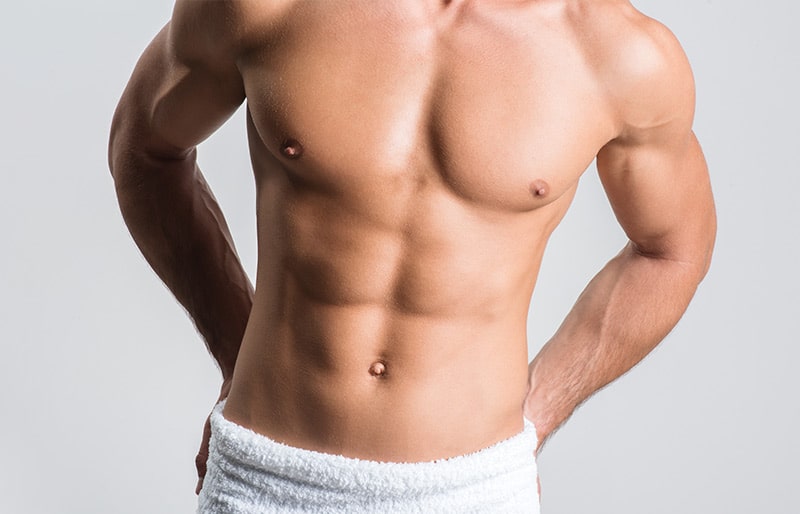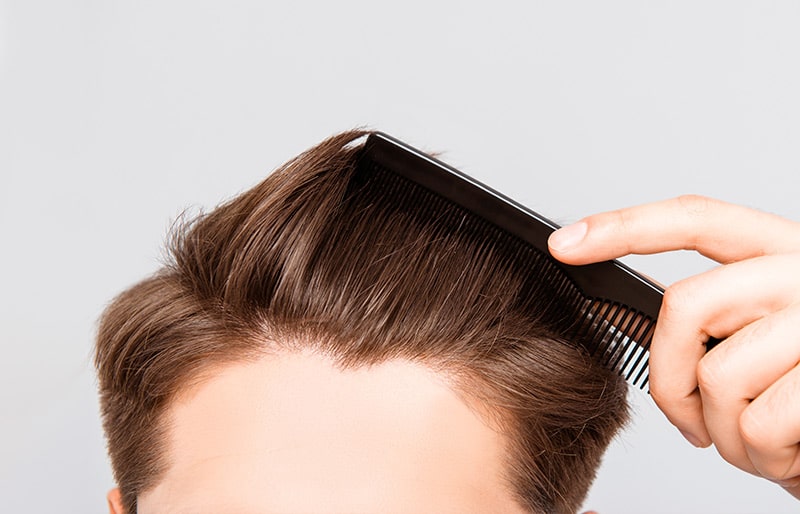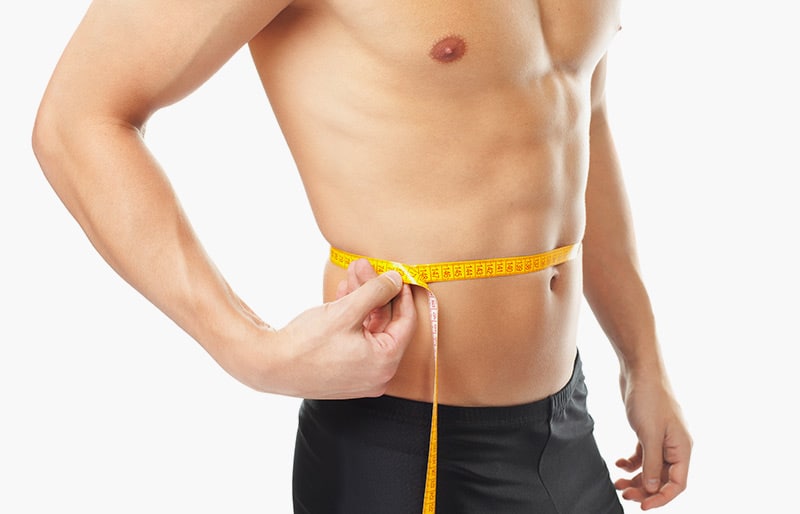
Facelifts
Suture lines may be more difficult for men to hide, since they don’t wear make-up or style their hair toward their faces, as many women do. Hair growth and beard growth mayplay a major role in the outcome of a facelift. If you are balding or have thinning hair, surgical artistry may be required to hide a full facelift incision, especially in the temple area.
Many men are better candidates for the “QT Lift™” which is a scaled down version of the traditional full facelift with minimal incisions and little down time. The incisions are hidden in the crease of the ear and behind the ear; therefore thinning or balding hair is not an issue. The “QT Lift™” is often the choice for men because of their busy schedules.
More information on the low downtime “QT Lift™” is discussed in another section of this website. The “QT Lift™ was featured on FOX 5 News as the alternative face-lifting procedure for people not quite ready for a full facelift. The “QT Lift™was developed by double-board certified facial plastic surgeon Louis M. DeJoseph, MD at Premier Image for people on the go. Using all the same techniques as the traditional full facelift, it is a scaled down version of the traditional full facelift with minimal incisions, less swelling and bruising, and a quick recovery time. Most patients are able to return to work within three to five days. Patients require only oral medications with local anesthesia and save about half the cost of the traditional full facelift.

Liposuction
Liposuction/body sculpturing: The ideal male body shape is considered to be trim and athletic-looking, with broad shoulders and chest, a flat abdomen, and a narrow hip-thigh area. However, as men age, areas of fat tend to accumulate around the abdomen, the flanks (“love handles”), the breast area (a condition called gynecomastia), and along the chin and neck. Men sometimes seek liposuction to remove these fatty areas that are resistant to diet and exercise.
Lipo-sculpturing and fat transfers are an excellent choice in muscle-enhancing surgery. A small number of doctors have begun offering their male patients abdominal etching, a new liposuction technique that creates a muscular, rippled appearance in the abdominal area. Lipo-sculpturing, fat transfer and abdominal etching are safe, effective ways to create a trim, muscular appearance.
In many cases, liposuction alone can effectively correct these problem areas. Men retain their skin elasticity longer than women do, and the areas of fat beneath the skin tend to be firmer and more vascular than those in women. Because of these and other factors, liposuction in men is usually very effective. Men with good skin elasticity who have only a moderate amount of excess abdominal fat may benefit from liposuction alone.
Men who have some loose, hanging skin as well as areas of excess fat may opt for a traditional excision procedure (surgical skin removal) in addition to liposuction. An excision may also be performed on gynecomastia patients whose breast enlargement is made up of mostly glandular tissue, rather than fat.

Body Implants
Muscle-enhancing surgery: In recent years, plastic surgeons have developed ways of improving muscle contour with cosmetic implants and “sculpting” techniques.
Calf implants, which were originally developed to restore leg contour in accident or polio victims, are now sometimes used to create cosmetic fullness in the lower leg. Similarly, pectoral implants, which are used to build the chests of men with Poland’s syndrome, can also be used to “bulk out” the existing pectoral muscles of healthy men.
Men who consider cosmetic muscle enhancement should keep in mind that these procedures are still relatively new. Muscle enhancing implants are still relatively new and steadily improving. Many patients complain of the comfort level they experience with them. Consultation with a board-certified plastic surgeon specializing in body contouring and sculpturing is necessary.

Skin Resurfacing
Skin resurfacing treatments for men will require that you postpone shaving for about 3 weeks after laser treatment, chemical peel or dermabrasion. Because these procedures strip away the surface layers of skin, you can expect your face to remain sensitive, swollen, and pink for several weeks after surgery. Any skin resurfacing treatment should be treated with medical skin care products prior to the procedure for optimal results. Equally important, post operative medical skin care products and sunscreen will ensure long lasting results.
Some men are happy that the beard growth helps conceal the pinkness of their recovering skin — especially if they feel uncomfortable using camouflage make-up. Men who feel self-conscious about their condition are also advised to give up alcoholic drinks for about 4 weeks. Alcohol causes the areas of treated facial skin to become noticeably red and flushed.

Hair Transplant
The primary consideration for men contemplating hair-replacement surgery is the time involved. Natural-appearing hair replacement usually requires multiple surgical procedures, with long recovery intervals. A full regimen of hair transplants may last anywhere from 18 months to 2 years or more.
You should be aware that incisions or transplant sites may be noticeable to others, especially in the early stages of the hair transplant process. If your work or lifestyle isn’t compatible with a long treatment period, ask your surgeon about alternatives to hair-transplant options, such as flap surgery or scalp reduction.

Abdominoplasty
A full abdominoplasty or “tummy tuck” may be chosen by men who have hanging abdominal skin (usually the result of massive weight loss), loose abdominal muscles, and/or neglected hernias. It is a major surgical procedure that removes excess fat, tightens the muscles of the abdominal wall, and trims the waistline.
Men who have a full abdominoplasty are often surprised at the long recovery period, which is on the average two to three weeks. You will be asked not to drive for ten days or while on any pain medications.
After your surgery
In general, it’s known that male facial skin has a richer blood supply than female facial skin. Male faces bleed more during surgery.
Your surgeon will require cessation of smoking at least 30 days prior to surgery, as poor healing and other complications are frequent with smokers. Smoking inhibits blood flow to the skin and interferes with the healing process.
Transportation to and from your surgery as well as your first post operative care will be needed. You will need to arrange for someone to stay with you overnight. Experienced care givers are always available if scheduled in advance.
Make a trip to the grocery store for some yummy juices, yogurt, soup, gingerale, and other easy to eat, soothing foods and beverages. Don’t forget to get frozen peas, a great substitute for your ice packs.
You can reduce your risks by closely following your surgeon’s advice both before and after surgery.